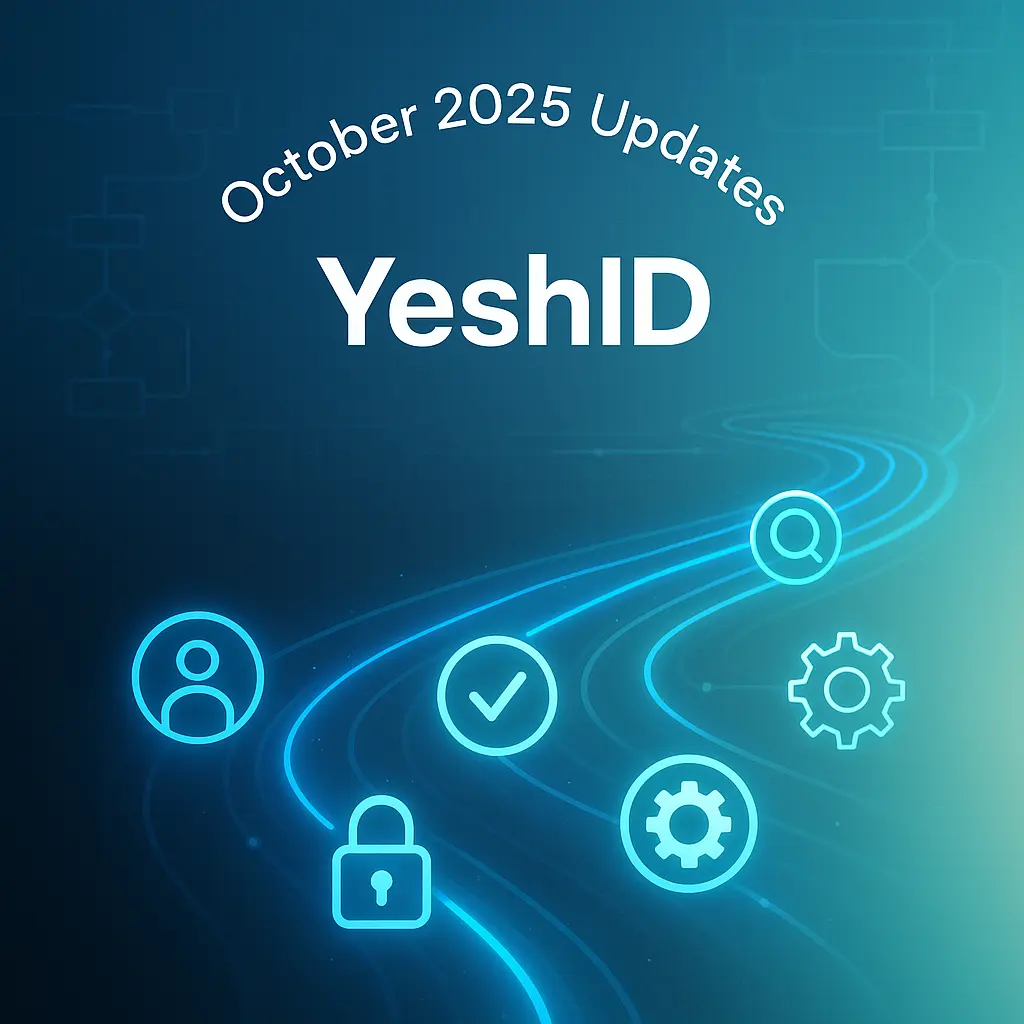Release Notes October 2025

What’s new in October: YeshID updates for clearer workflows and smoother app requests
This month’s YeshID product updates focus on cutting friction for admins and end users. You’ll see faster, clearer application requests, easier task reassignment, and stronger provisioning with System for Cross‑domain Identity Management (SCIM).
TL;DR
- 🧭 Cleaner app requests — end users see the right custom fields; admins see requestable apps; My Apps still shows apps you already have.
- 👥 Assignee changes that stick — reassign tasks (including virtual and application tasks) without surprises; workflows stay stable when people leave.
- 👀 Clarity for non‑admins — no duplicate dynamic tasks; each task now shows its parent context.
- 🔧 SCIM that “just works” — correct content types, robust ID/role handling, and readable error previews in Test Import.
- ✉️ Alias mapping control (Beta) — optionally disable auto‑mapping to email aliases to prevent cross‑mapping.
App requests & My Apps — fewer tickets, more clarity
End users can now see the custom fields required in application requests, so requests are complete the first time. We also aligned the “Hide from application request” setting with its label: hiding an app from the request list no longer hides it from My Apps if a user already has an account. Finally, admins again see the correct list of requestable apps in the “Request an application” dialog.
How to try it
- Start a request (Access → Request an application) and confirm required custom fields are visible.
- If you hide an app from requests, check My Apps to verify it still shows for users who already have access.
- As an admin, open Request an application and confirm the dropdown populates as expected.
Assignee control in workflows — changes that stick
You can safely reassign workflow tasks, including virtual tasks and application tasks, and expect the update to persist. The product now clearly indicates when updates are allowed and enforces that in the background, reducing confusion and accidental edits. When a person is deactivated or deleted, YeshID automatically cancels pending tasks targeting them and unassigns them from incomplete tasks and templates—preventing “invalid assignee” errors and stuck workflows.
How to try it
- Open a workflow task and change the assignee (works with virtual and application tasks).
- Deactivate a test user and review related workflows to confirm tasks are unassigned or canceled as needed.
Clearer task views for non‑admins — more context, no duplicates
Non‑admin users (like technical owners) now see a clean, de‑duplicated task list. Dynamic container tasks that previously caused duplicate entries are hidden for these users. To preserve context, each sub‑task now includes its parent task name (e.g., “Remove from application — Deactivate user”), so assignees understand the “why” behind their work without extra clicks.
How to try it
- Log in as a non‑admin assigned to tasks.
- Open a workflow with subtasks and confirm there are no duplicates and that each task shows its parent label.
SCIM provisioning & imports — easier debugging, fewer failures
We tightened SCIM (System for Cross‑domain Identity Management) compatibility so integrations are more resilient. YeshID now sends the correct application/scim+json content type where required, skips sending empty role arrays that upset some providers, and better handles large numeric IDs so fields don’t convert to scientific notation. In the Test Import flow, error previews now surface the server’s response context on 4xx/5xx errors—helping you troubleshoot faster without guesswork.
How to try it
- Run Test Import on a SCIM integration and review the error preview on a failing call.
- Verify create/update actions no longer fail with 415 errors on strict providers.
- Confirm user creation updates roles correctly when configured.
Alias mapping control — prevent cross‑mapping (Beta)
Some teams prefer not to auto‑map YeshID people to email aliases (for example, when managers hold aliases for former employees). You can now opt out with a new org setting to disable alias‑based mapping. This helps keep accounts clean and avoids mismatches in environments with many aliases.
How to try it
- Ask Support to enable the alias‑mapping setting for your org.
- Toggle the setting on/off to match your mapping policy.
Admin tips
- Creating a person without onboarding? If you’re not starting a workflow, user creation no longer gets blocked by template validation—just leave the onboarding checkbox off.
- Safer template deletes. Deleting a workflow template now includes a confirmation dialog to prevent accidental removal.
Availability & rollout notes
All updates above are live for all customers unless marked (Beta). The alias mapping control is behind a feature flag and available on request.
We’re focused on helping IT and Security teams move faster with less risk. These YeshID product updates should reduce back‑and‑forth, keep workflows moving, and make integrations more dependable.
Tell us what would save your team the most time next. Share feedback in the comments or reach out to our support team for help getting started.

